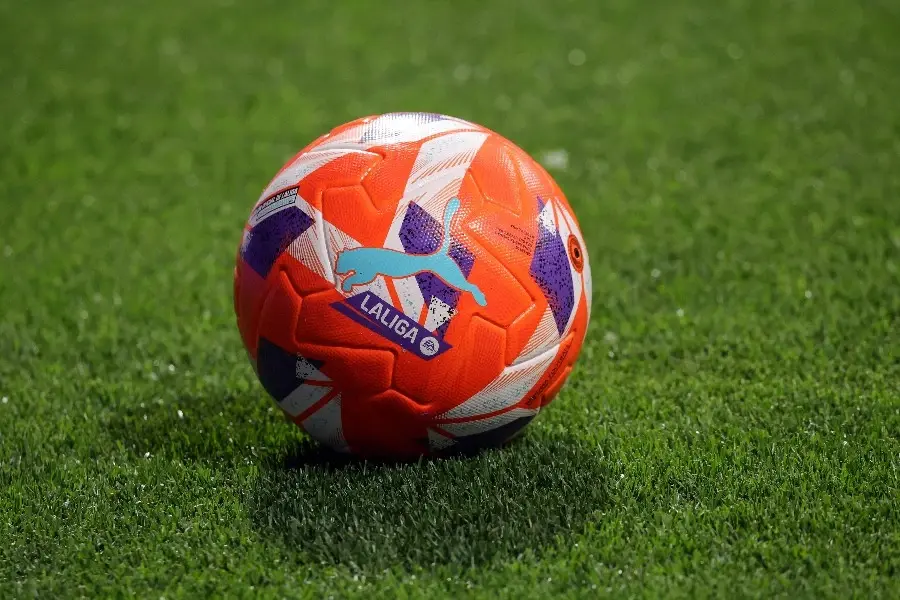As a rule, 20 clubs compete in a double round‑robin, home and away. Three points for a win, one for a draw; titles, European qualification, and relegation are decided at the end. This consistency supports newsroom and Social Media planning with recurring milestones. Data series remain comparable across years, which benefits infographics, fact cards, and serialized formats.
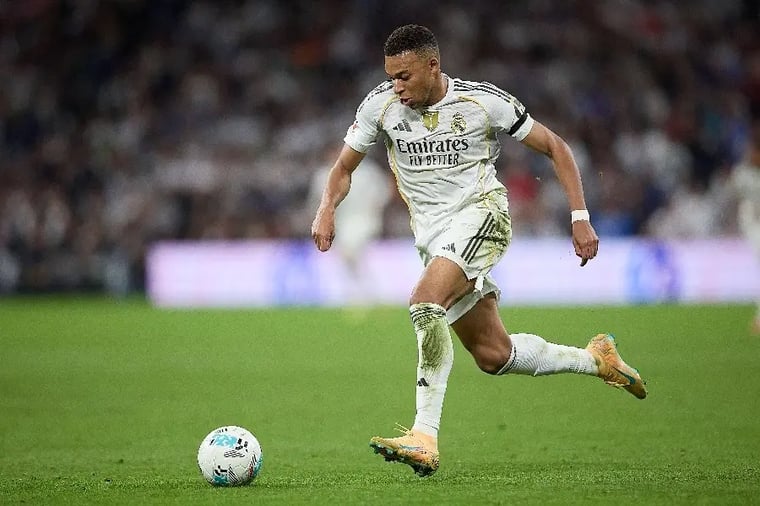
IMAGO / DeFodi Images / Manu Reino | Kylian Mbappe (Real Madrid CF) controls the ball during the LaLiga EA Sports match between Real Madrid v Valencia CF at Santiago Bernab u on November 1, 2025 in Madrid, Spain.
Historical Highlights: From 1929 to Global Visibility
La Liga began in 1929 as a national professional league and grew over decades into one of the most visible stages in club football. Political turning points, structural reforms, and gradual professionalization shaped its profile. With expanding media coverage, La Liga gained international reach and a stable global fan base.
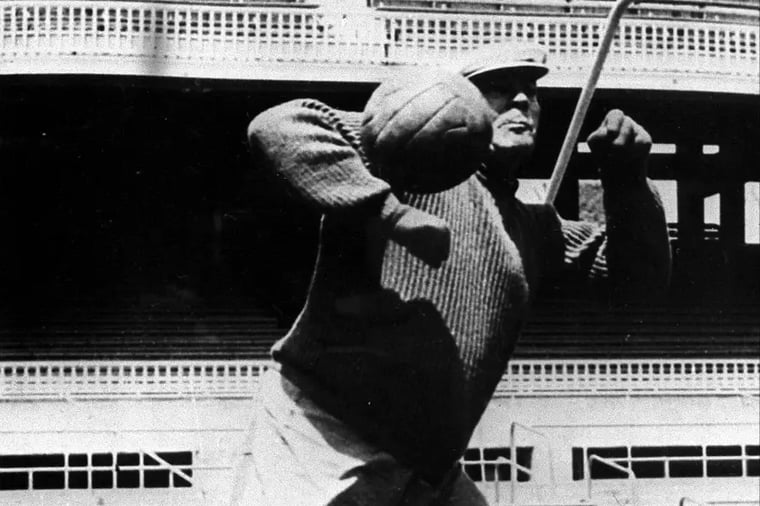
IMAGO / Buzzi | Goalkeeper Ricardo Martinez Zamora (Real Madrid) Football Men's Primera Division 1934 1935, 1st Spanish League, CF Real Madrid Single image Madrid.
Eras and Figures: What Has Shaped the League
Successive player generations reflect stylistic phases and tactical evolution. Coaching ideas — from positional, possession‑based play to varied pressing — changed game rhythms and role profiles. Epoch retrospectives, coach profiles, and style comparisons work well as editorial formats.
Rivalries as a Content Engine
El Clásico (Barcelona vs. Real Madrid) concentrates sporting quality, tradition, and strong visual motifs. City and regional derbies — Sevilla vs. Betis, Atlético vs. Real, Athletic vs. Real Sociedad — anchor the league in distinct cultural contexts. These matches supply recurring hooks for dossiers, live formats, and Social Media series with clear visual narratives.
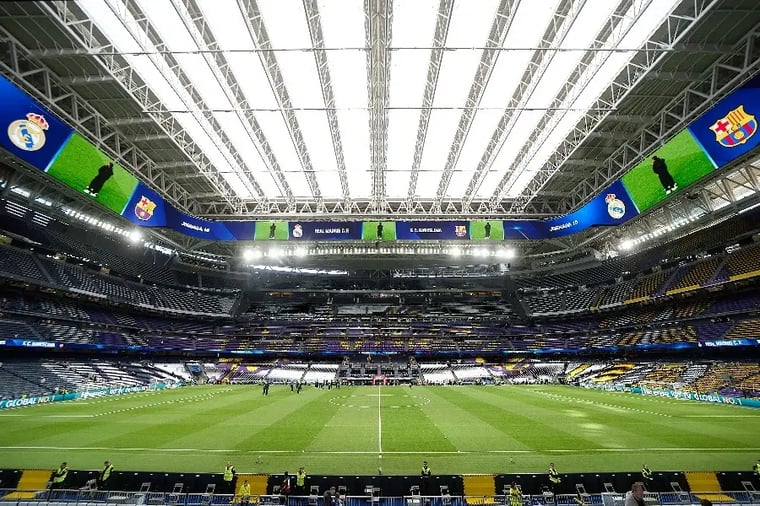
IMAGO / DeFodi Images / Manu Reino | General view Of Santiago Bernabeu Stadium during the LaLiga EA Sports match between Real Madrid v FC Barcelona, Barca at Santiago Bernabà u on October 26, 2025 in Madrid, Spain.
Stadiums and Fan Culture: Places, Rituals, Atmospheres
Iconic arenas and traditional city stadiums shape the league’s visual identity. Choreographies, chants, and local rituals create imagery that tells stories without many words. Panoramas, close‑ups, and detail shots that connect architecture, crowd, and on‑field moments work well for Social Media carousels.

IMAGO / ZUMA Press Wire / David Ramirez | Stadium views during the LaLiga EA Sports match between FC Barcelona, Barca v Elche at the Lluis Companys Olympic Stadium on November 2, 2025 in Barcelona Spain Barcelona Spain.
Playing Styles and Tactics: From Possession Phases to Pressing Intensity
Spanish teams are traditionally associated with technical midfield play and structured positional play. In parallel, a pronounced pressing culture with variable height has developed. Analysis posts benefit from sequence screenshots and minimalist overlays that make runs and spacing visible — sketching complex ideas in a platform‑appropriate way.
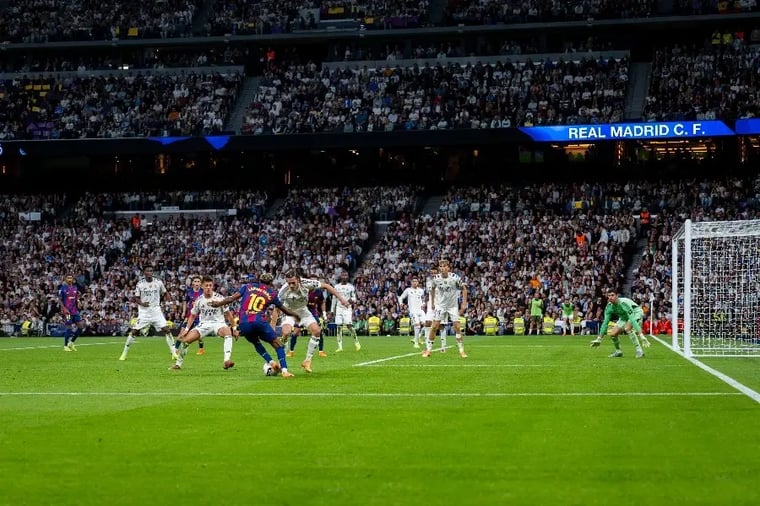
IMAGO / Alberto Gardin | Real Madrid CF vs Barcelona FC - LaLiga EA Sports A general view of the stadium while Lamine Yamal of FC Barcelona, is in action with the ball during the LaLiga EA Sports football match between Real Madrid CF and FC Barcelona at Estadio Santiago Bernabeu on October 26, 2025 in Madrid Spain Credit:
Youth Development and Academies: From the Cantera to the First Team
Academies and talent centers are core elements of league culture. Clubs combine homegrown pathways with targeted squad planning. Debut timelines, position profiles, and “from youth match to pro” series suit blogs and Social Media.
Awards as Narrative Anchors: Pichichi and Zamora
The Pichichi honors the season’s top scorers, while the Zamora recognizes the goalkeeper with the best goals‑against ratio. These long‑standing awards offer annual reference points for rankings, fact cards, quiz formats, and visual retrospectives.
Visual Language, Quality, and Workflow for Editorial & Social Media
High‑quality images increase professionalism, readability, and interaction across channels. Keys are clear action, readable expressions, and clean lines. For headers, teasers, and feeds: horizontal for article lead images; vertical for Stories and Reels.
Practical notes:
-
Prioritize clear‑action frames (celebrations, duels, saves).
-
Build tactic posts as short sequences (wide shot, close‑up, overlay).
-
Adapt crops, color consistency, and sharpness to the target format.
-
Keep captions precise: competition, matchup, venue, time, core action.
Topic Ideas for Newsrooms, Blogs, and Social Media
An “On‑this‑day” series makes history immediately usable. Rivalries lend themselves to season‑like arcs with episodic structure. Tactic moments work in short clips with three on‑screen facts. Data nuggets — table momentum, scoring streaks — suit recurring info cards.
Legal Framework & Licenses — Overview for Editorial & Non‑Editorial Use
La Liga combines sporting quality, historical depth, and clear season structures, giving newsrooms and Social Media a reliable foundation for planned content. Those who pair high‑quality images with a clean rights basis communicate with lasting credibility.
Principles: A license grants usage rights, not ownership; copyright remains with the creator or the representing agency. IMAGO works with a worldwide network of partner photographers, agencies, and archives and offers clearly defined license models:
-
Rights Managed (RM): Single, clearly defined use with parameters such as duration, territory, and medium.
-
Royalty Free Classic (RF): Flexible multiple use across different media and time periods.
-
Royalty Free Premium (RF Premium): Expanded permissions including print, packaging, advertising, and merchandising.
Editorial vs. non‑editorial: Editorial use includes reporting, analysis, and documentation. Non‑editorial use covers sponsorship, brand communication, campaigns, and product contexts and requires an appropriate license. Brand and event rights must be checked separately.
Access options in brief: Single licenses directly via the webshop; for recurring needs, credit packages are available; for complex projects, a Sales Manager supports research, negotiation, and ongoing assistance.
Standard notices:
English: “Images are licensed for editorial use; non‑editorial use requires a corresponding license (non‑exclusive).”
More articles on exciting sports highlights:



